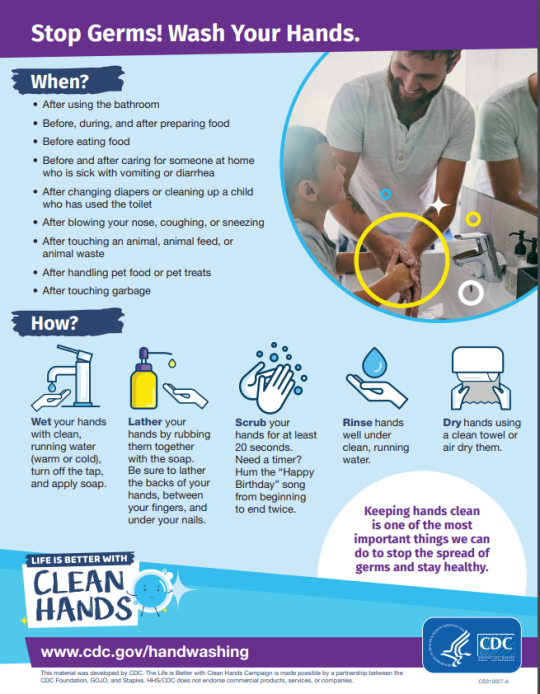
Currently, everyone is very concerned with Coronavirus and its
implications for both their personal health, as well as their company. However,
with attention to employee safety and legal preparedness, employers can take
simple steps to minimize employee’s risk of infection, as well as their own
legal risk.
1. Stay Informed:
- Despite the widespread media panic, the CDC recommendations, are
very much on par with the simple steps it already recommends for the seasonal
flu including washing your hands and avoiding touching your face. - Follow reputable sources such as the Center for Disease Control
and Prevention (CDC), The World Health Organization (WHO), and the European
Center for Disease Prevention and Control (ECDC), for updates, including
possible updates in prevention protocol. - Be sure that your corporate policy is in alignment with official
recommendations that can be a potential legal safeguard.
2. Intensify Communications And Hygiene:
- Remind staff of proper handwashing techniques.
- Remind staff to avoid touching their face (specifically eyes nose
and mouth). - Place posters that encourage staying home when sick, cough and
sneeze etiquette, and hand hygiene at the entrance of your workplace and other
places where they are likely to be seen. (here) - Perform routine cleaning, with the same cleaners normally used,
including frequent cleaning of commonly touched surfaces such as countertops,
elevator buttons, and doorknobs. Note No additional disinfection beyond routine
cleaning is recommended at this time. - Provide disposable wipes for commonly used surfaces (doorknobs,
keypads, remotes, etc.). - Instruct staff to inform management if they have been exposed, or
show symptoms of the infection. Failure to do so can potentially expose a
company to liability should an employee become exposed in the workplace
3. Consider Restrictions About Returning To Work:
- Anyone who has recently traveled internationally, particularly
Asia should self-quarantine for 14 days. - Actively encourage sick employees to stay at home, until they have
been fever and symptom-free for at least 24 hours. - Consider alternatives to in-office work. Telecommuting, webinars,
and working from home can be effective forms of social distancing - Do not require a healthcare provider’s note for employees who are
sick with acute respiratory illness to validate their illness to return to
work. Healthcare provider officers are most likely extremely busy and may not
be able to execute these requests in a timely manner. - Written policies should be explicit about when employees with
potentially transmissible conditions will and will not be allowed back.
4. Be mindful of an employer’s duty to care.
- The Occupational Safety and Health Act (OSHA), requires employers
to provide employees with a workplace “Free from recognized hazards”, and OSHA
can cite employers for violating this if they have not taken reasonable steps
to abate such hazards. - Consider further liability to third parties such as customers. For
example, a restaurant employee, sick on the job, can pass the infection to not
only co-workers but customers.
5. Evaluate Leave and Pay
- Ensure your sick leave policies are flexible and consistent with
the public health guidelines. - Be mindful of legislation such as the Family and Medical Leave Act
(FMLA), and the Americans with Disabilities Act (ADA), as well as state
compensation laws, and company policies. Figure out how much paid leave each
employee is eligible for. - Consider under which circumstances they want to expand benefits or
protection for employees on leave. Employees may use more sick days this year,
and the company could consider allowing extra. - Where possible, maintain a flexible policy that permits employees
to stay home to care for a sick family member. Know more employees than usual
may need to stay at home to care for a sick loved one. - On March 6th Democrats in the House and Senate introduced legislation that
would require all U.S. employers to grand workers paid sick days in light of
the virus. At this time nothing has been passed. Keep an eye out for updates on
the bill.
6. Alleviate Stress and Anxiety
- Consider being more flexible than normal. For example instead of
terminating employees who refuse to come into the office for fear of illness,
consider letting them work from home. - Be aware that mental health conditions (such as germ phobia) may
be protected by the Americans with Disabilities Act (ADA), and employers need
to take a modified approach pursuant to reasonable accommodations.
7. Protect Privacy
- Employees may be obligated to disclose if he/she becomes infected
or is at a high-risk for infection (anything that could interfere with the
employee’s ability to perform essential job functions). - Even rigorous privacy rules allow employees to disclose protected
health information to authorities for public health purposes. All such
information must be handled within the data privacy framework of the
organization and done so with care. - If an employee has contracted the virus, the employers should
immediately notify the CDC, as well as other employees. Then, file any
appropriate paperwork (FMLA, state law, workers’ compensation, etc.)
8. Have A Contingency Plan
- This may include, temporary succession planning for key
decision-makers, and understanding and preparing in advance for legal
requirements such as furloughs and layoffs. - Companies should have a basic preparedness plan. This includes
establishing a communication team and releasing a detailed communication plan
with clear messages (on all organization’s sites). Consider different scenarios
and how you could mass communicate information in each of them. Should
landlines go down, cellphones, text, apps, etc may be effective forms of
communication. - Most jurisdictions require formal notifications for layoffs above
a certain number of employees, and failure to do so can result in
penalties.


0 Comments